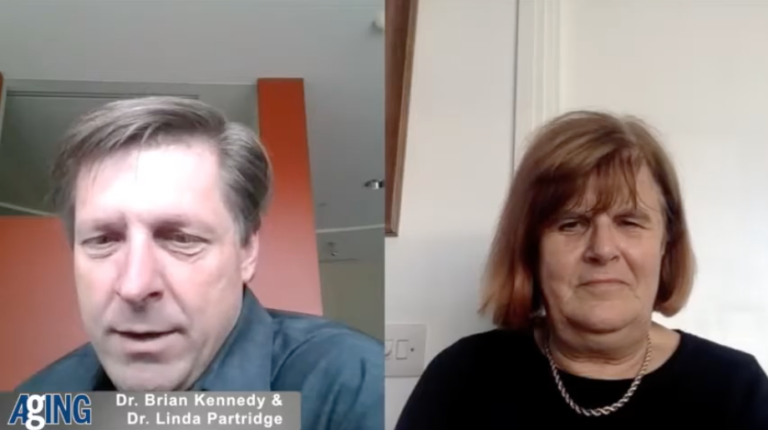Table of Contents: Oncotarget’s Volume 12, Issue #18
Oncotarget
August 31, 2021Oncotarget’s Volume 12, Issue #18
New Publications
Cover (Priority Research Paper): Normal tissue and tumor microenvironment adaptations to aerobic exercise enhance doxorubicin anti-tumor efficacy and ameliorate its cardiotoxicity in retired breeder mice
Origin: Florida, United States
Institution: University of Florida
Quote: “Aerobic exercise is receiving increased recognition in oncology for its multiple purported benefits. Exercise is known to induce physiologic adaptations that improve patient quality-of-life parameters as well as all-cause mortality. There also is a growing body of evidence that exercise may directly alter the tumor microenvironment to influence tumor growth, metastasis, and response to anticancer therapies.”
Research Paper: Selinexor, a selective inhibitor of nuclear export, enhances the anti-tumor activity of olaparib in triple negative breast cancer regardless of BRCA1 mutation status
Origin: California, Massachusettes, United States; Levallois-Perret, France; Singapore
Institutions: University of California, Franco-British Hospital, Karyopharm Therapeutics Inc., Aide et Recherche en Cancérologie Digestive Foundation, National University of Singapore
Quote: “We examined the effects of co-treatment with selinexor and olaparib in TNBC [triple-negative breast cancer] cell lines.”
Research Paper: Pim kinase inhibitor co-treatment decreases alternative non-homologous end-joining DNA repair and genomic instability induced by topoisomerase 2 inhibitors in cells with FLT3 internal tandem duplication
Origin: Maryland, United States;
Institutions: University of Maryland, Institute for Genome Sciences, Veterans Affairs Medical Center
Quote: “Acute myeloid leukemia (AML) with fms-like tyrosine kinase 3 internal tandem duplication (FLT3-ITD) relapses with new chromosome abnormalities following chemotherapy, implicating genomic instability. Error-prone alternative non-homologous end-joining (Alt-NHEJ) DNA double-strand break (DSB) repair is upregulated in FLT3-ITD-expresssing cells, driven by c-Myc.”
Research Paper: Impact factor and citation metrics in phase III cancer trials
Origin: The University of Texas MD Anderson Cancer Center
Institution: Texas, United States
Quote: “Journal impact factor (IF) is often used to measure research quality and importance. We assessed trial factors associated with the publication of cancer trials in journals with higher IF and publications receiving higher citations.”
Research Paper: Inhibition of the MAP2K7-JNK pathway with 5Z-7-oxozeaenol induces apoptosis in T-cell acute lymphoblastic leukemia
Origin: Texas, United States
Institution: Baylor College of Medicine
Quote: “Here, we showed the small molecule 5Z-7-oxozeaenol (5Z7O) induces dose-dependent cytotoxicity in a panel of T-ALL [T-cell acute lymphoblastic leukemia] cell lines mainly through inhibition of the MAP2K7-JNK pathway, which further validates MAP2K7 as a therapeutic target.”
Research Paper: Correlation between PD-L1 expression and MET gene amplification in patients with advanced non–small-cell lung cancer and no other actionable oncogenic driver
Origin: Barcelona, Spain
Institution: Germans Trias i Pujol Hospital
Quote: “Herein, we investigated the relation between MET gene amplification and PD-L1 expression in patients with advanced NSCLC [non–small-cell lung cancers] and no other actionable oncogenic driver (i.e., EGFR, ALK, ROS1).”
Research Paper: Effect of hypertension and medication use regularity on postoperative delirium after maxillofacial tumors radical surgery
Origin: Shanghai, Shandong, China
Institutions: Shanghai University of Traditional Chinese Medicine, Shanghai Jiao Tong University School of Medicine, The Second Affiliated Hospital of Shandong First Medical University
Quote: “The incidence of postoperative delirium (POD) after maxillofacial tumors radical surgery is relatively high. There are a number of evidences showing the relationship between hypertension and decreased cerebral blood flow, as well as the relationship between cerebral ischemia and postoperative cognitive impairment.”
Review: Anti-aging: senolytics or gerostatics (unconventional view)
Origin: New York, United States
Institution: Roswell Park Cancer Institute
Quote: “Senolytics are basically anti-cancer drugs, repurposed to kill senescent cells selectively. It is even more difficult to selectively kill senescent cells than to kill cancer cells. Based on lessons of cancer therapy, here I suggest how to exploit oncogene-addiction and to combine drugs to achieve selectivity.”
Case Report: The value of comprehensive genomic sequencing to maximize the identification of clinically actionable alterations in advanced cancer patients: a case series
Origin: Arizona, United States
Institutions: Translational Genomic Research Institute, Ashion Analytics, LLC, HonorHealth Research Institute
Quote: “We present seven cases of advanced cancer patients who initially underwent tumor testing utilizing smaller, panel-based tests, followed by a variety of therapeutic treatments which ultimately resulted in progression of their disease.”
Editorial: Juvenile polyposis without a germline variant in SMAD4/BMPR1A: defining a clinically distinct polyposis syndrome
Origin: Philadelphia, United States
Institutions: The Children’s Hospital of Philadelphia, University of Pennsylvania Perelman School of Medicine
Quote: “Juvenile Polyposis Syndrome (JPS) is a rare gastrointestinal (GI) polyposis syndrome in which
approximately half of cases are caused by constitutional changes in SMAD4 or BMPR1A. The other half of JPS cases lack a known genetic driver (i.e., mutation-negative) and are instead diagnosed clinically based on existing criteria including having five or greater pathologically defined juvenile polyps in the lower GI tract, juvenile polyps in the upper and lower GI tract, or any number of juvenile polyps with a family history of JPS.”
Research Perspective: Targeting cancer stem cells via integrin β4
Origin: Michigan, United States; Wuhan, China
Institutions: University of Michigan, Renmin Hospital of Wuhan University
Quote: “Integrins mediate cell-cell interactions and communication with the extracellular matrix (ECM). These transmembrane protein receptors allow binding between a cell and its surroundings, initiating a breadth of intracellular signaling resulting in proliferation, differentiation, survival, or migration. Such responses have made integrins an attractive target for cancer therapy.”
Click here to read Oncotarget’s Volume 12, Issue #18.
YOU MAY ALSO LIKE: More Oncotarget Videos on LabTube
—
Oncotarget is a unique platform designed to house scientific studies in a journal format that is available for anyone to read—without a paywall making access more difficult. This means information that has the potential to benefit our societies from the inside out can be shared with friends, neighbors, colleagues, and other researchers, far and wide.
For media inquiries, please contact media@impactjournals.com.

